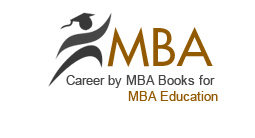Extensive Reading:
As we already mentioned our way of reading is influenced by the purpose of our reading. Most of us have the habit of reading especially when we are free or have a lot of leisure time. We might get hold of a novel, a comic strip, a magazine etc.
When we read for the pure pleasure of reading we call it extensive reading. But, we should not give it a lesser priority because it is extensive reading. It is enjoyable as well as informative. Here, we practice rapid reading to get the global/overall understanding of the matter.
Intensive Reading:
When we read shorter texts like a research paper, for getting specific details / information we read slowly with a lot of concentration. This is intensive reading. When you read a book as a resource material for research you read it intensively because the overall understanding is not the objective/purpose of our reading.
When you read an article in order to write a review on it, you read it intensively. We use all the skills of reading when we do intensive reading.
For example - Every star is a sun, like our own sun. This means that stars are huge balls of glowing gases. They are so hot that if a piece of steel were placed there, it would disappear in a cloud of gas! In many of the stars, the gases are very thin. This is because the particles or atoms of matter in the gas are far apart.
But stars do have matter in them. We know, for example that the sun contains more than sixty of the chemical elements present in the earth. Among the elements in the sun are hydrogen, helium, iron calcium and magnesium.
In cooler stars, the matter may be more nearly liquid, somewhat like the boiling iron in a blast furnace. In some very old and cold stars, the matter may be so closely packed that a cubic inch of it would weigh a ton.
It is the next chapter of skimming and scanning types of reading which is taken from Business Communication of SMU MBA MB0023 book.
As we already mentioned our way of reading is influenced by the purpose of our reading. Most of us have the habit of reading especially when we are free or have a lot of leisure time. We might get hold of a novel, a comic strip, a magazine etc.
When we read for the pure pleasure of reading we call it extensive reading. But, we should not give it a lesser priority because it is extensive reading. It is enjoyable as well as informative. Here, we practice rapid reading to get the global/overall understanding of the matter.
Intensive Reading:
When we read shorter texts like a research paper, for getting specific details / information we read slowly with a lot of concentration. This is intensive reading. When you read a book as a resource material for research you read it intensively because the overall understanding is not the objective/purpose of our reading.
When you read an article in order to write a review on it, you read it intensively. We use all the skills of reading when we do intensive reading.
For example - Every star is a sun, like our own sun. This means that stars are huge balls of glowing gases. They are so hot that if a piece of steel were placed there, it would disappear in a cloud of gas! In many of the stars, the gases are very thin. This is because the particles or atoms of matter in the gas are far apart.
But stars do have matter in them. We know, for example that the sun contains more than sixty of the chemical elements present in the earth. Among the elements in the sun are hydrogen, helium, iron calcium and magnesium.
In cooler stars, the matter may be more nearly liquid, somewhat like the boiling iron in a blast furnace. In some very old and cold stars, the matter may be so closely packed that a cubic inch of it would weigh a ton.
It is the next chapter of skimming and scanning types of reading which is taken from Business Communication of SMU MBA MB0023 book.
